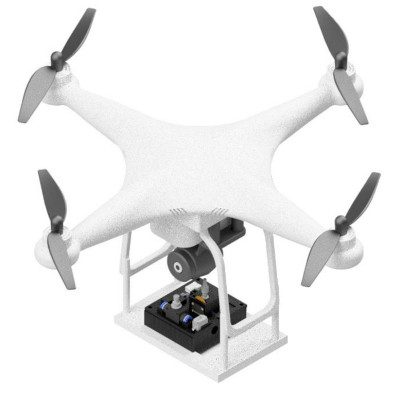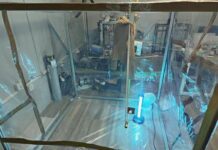
A “lab-on-a-drone” system has been used to monitor hydrogen sulphide gas from the air above a wastewater treatment plant in Brazil, in a project that has been written up in the American Chemical Society publication Analytical Chemistry.
Hydrogen sulphide (H2S) – well known for its putrid, rotten-egg odour – is a problem pollutant associated with petroleum refineries and wastewater treatment plants. The gas is an irritant, and in high enough amounts, it can be toxic. Most methods to quantify H2S and other pollutants rely on ground-based instruments, and expensive devices such as satellites are required to collect measurements at higher altitudes. Unmanned drones have been used by researchers to gather samples in mid-air, but analyses still had to be performed on the ground with traditional instruments. So, João Flávio da Silveira Petruci and colleagues wanted to create an inexpensive “lab-on-a-drone” that could sample and analyze H2S gas while in the air and report the results in real time — seemingly a first for devices of its kind.
Using a 3D printer, the team manufactured a custom device that was mounted to the bottom of a commercially available quadcopter drone. It took advantage of a unique chemical reaction between H2S and a green-glowing fluorescein mercuric acetate molecule. When excited by an onboard blue LED light, the interaction caused a decrease in the green fluorescence intensity, which was detected and quantified. This reaction is highly selective and was not affected by other, interfering gaseous air pollutants.
The team took their drone to a wastewater treatment plant, where it sampled air on the ground, then at around 30 and 65 feet in the air at three different times throughout the day. The detection device transmitted its results via Bluetooth to a smartphone, allowing for real-time monitoring. In the evening, there was a clear increase in H2S concentration as the drone increased altitude, though it never exceeded the acceptable ambient level. The researchers say that this system could be adapted to detect other pollutants in the future.
The authors acknowledge funding from the Coordination for the Improvement of Higher Education Personnel, the Research Support Foundation of the State of Minas Gerais, and the National Council for Scientific and Technological Development.






